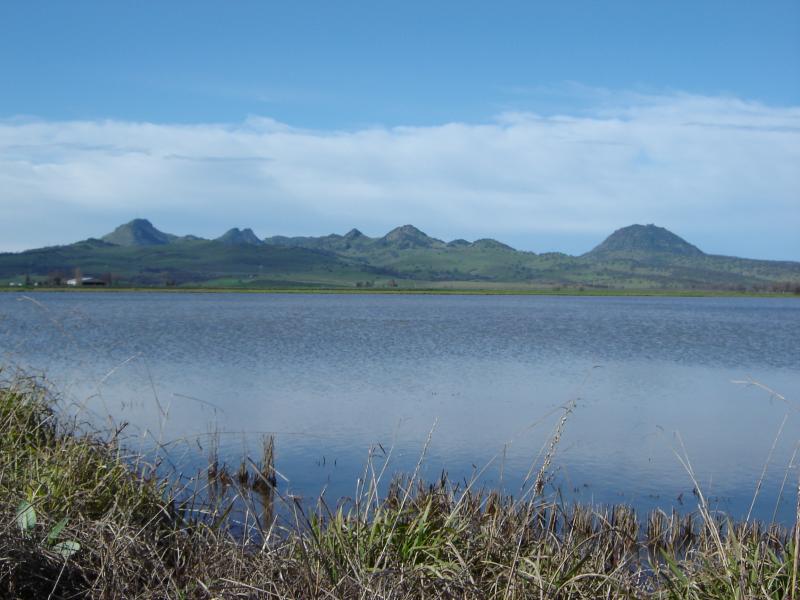The Sutter Buttes are a small circular complex of eroded volcanic lava domes which rise as buttes above the flat plains of the Central Valley of California in the United States. The highest peak, South Butte, reaches about 2,130 feet (650 m) above sea level. The Buttes are located just outside of Yuba City, California in the Sacramento Valley, the northern part of the Central Valley. They are named for John Sutter, who received a large land grant from the Mexican government. The Sutter Buttes also hold the title of being the world's smallest mountain range.

The mountains are about 10 miles (16 km) from north to south and east to west, and are the smallest mountain range in the world.
The Sutter Buttes were formed over 1.5 million years ago by a now-extinct volcano. Some geological references suggested that it represents the southernmost of the Cascade Volcanoes,[2] but there are significant differences in age and form compared to the other volcanoes in that range. The questions about their origin and connection to other regional volcanic activity are the subject of ongoing research.
The Sutter Buttes contain many flora and fauna species. Wildflowers are represented by numerous taxa; included in these many wildflowers is the Yellow Mariposa Lily,Calochortus luteus.

No comments:
Post a Comment